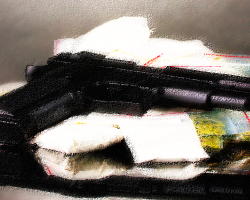Should Bartenders Receive Specialized Training to Prevent DUIs?

It’s very common for U.S. States to have laws on the books to require bartenders to cut off significantly intoxicated patrons. These are called “overservice laws.” While this is intended to increase the safety of our roads, when a patron gets to the point of being obviously impaired, it’s a sure bet that he (or she) would already test beyond the legal limit for driving. It might be necessary for bartenders to have more advanced skills to deal with alcohol-consuming patrons if they are to keep our roads safe.
First of all, can a bartender tell when a person hits the federally-mandated legal limit for driving of .08 % (blood alcohol concentration) BAC? Let’s look at what bartenders are told to look for when cutting off an intoxicated patron. One bartending website describes a person who needs to be cut off this way: “They wobble; they lose fine motor control; their speech is slurred.”
Where would that person be likely to measure if tested by law enforcement? Somewhere in this range:
- .08 to .09: You’re starting to slur your speech, balance is off, motor skills are starting to be impaired.
- .10 to .12: Significant impairment of motor control, speech is slurred. Balance and reaction time are impaired. Some people become aggressive or loud.
Other websites offering advice to bartenders generally echo the advice above, suggesting they look for:
- Bloodshot or glazed eyes
- Aggressive interactions with others
- Reduced motor control
- Being overly loud
- Swearing
So if a bartender is trying to detect impairment, he (or she) might not feel the patron reaches the cutoff point until he’s well into the range where he is not legally able to drive. If he has a ride home, fine, he’ll probably get there safely. But according to one study, 20% of those who binge-drank at bars drove their cars after leaving.
California Legislature Passes DUI Prevention Training Bill

In 2017, the California Legislature sent the Governor a bill that would require bartenders to go through training to enable them to prevent DUIs. This bill came about after a drunk driver killed two young female medical students. The driver had been told by his friends and bar staff not to drive but got in his car anyway and drove the wrong way down the highway.
Would such bartender training actually help to reduce DUIs? The only valid test would be a real-life one, however a 1987 research project found that when bartenders received basic training on cutting off intoxicated patrons, they intervened more often in patrons’ attempts to drink to the point of drunkenness.
If more bartenders are required to complete training to enable them to identify impaired patrons and divert that person away from further alcohol consumption, it’s possible to save lives. That means that fewer mothers and fathers will learn that their beloved child was killed by a drunk driver, and that those who drink may be spared the anguish of killing another person while they were intoxicated. Those would be wonderful improvements in our world that we can all wish for. Kudos to California legislators for passing this law on to the Governor for his signature.


 ®
®